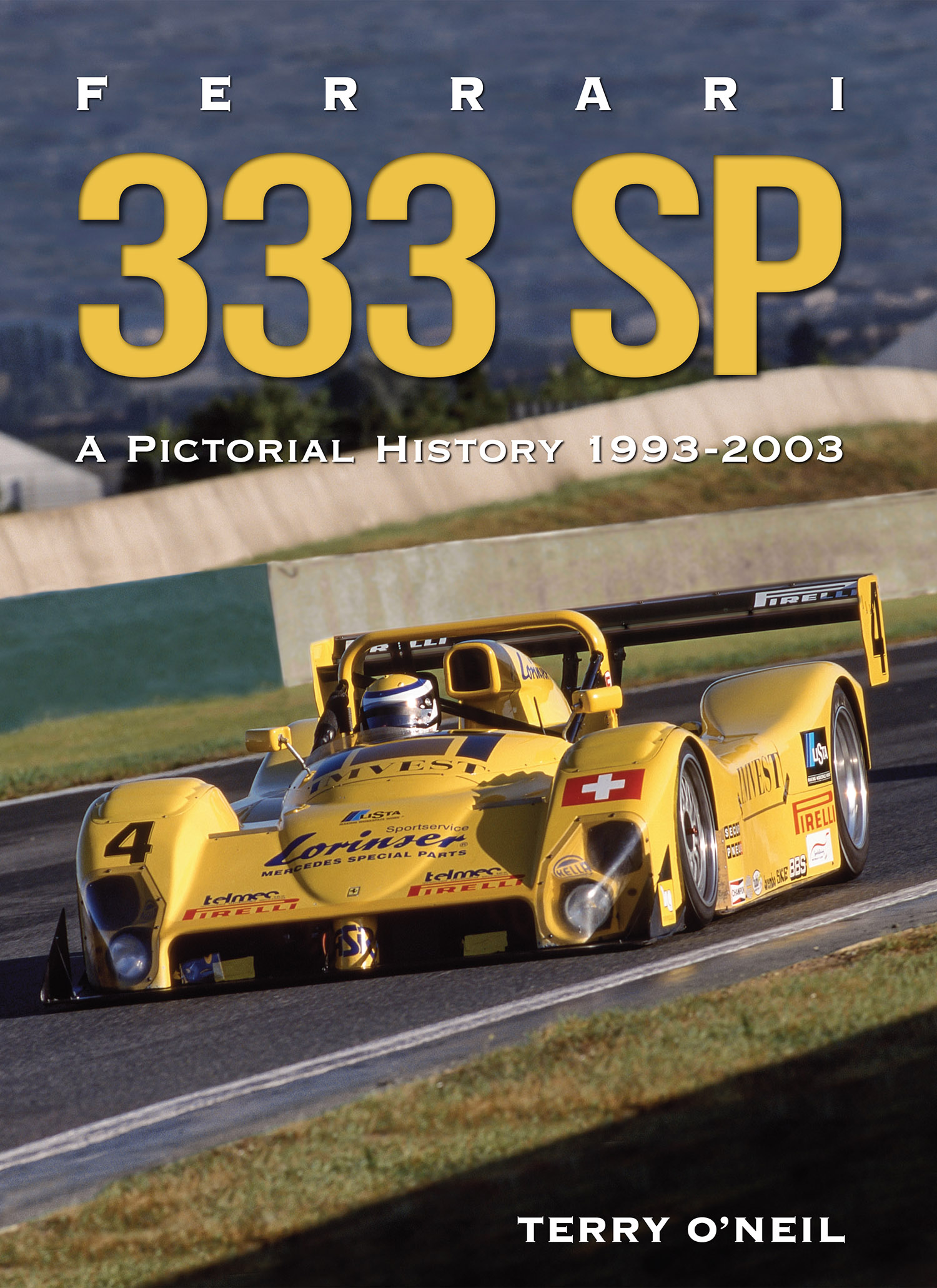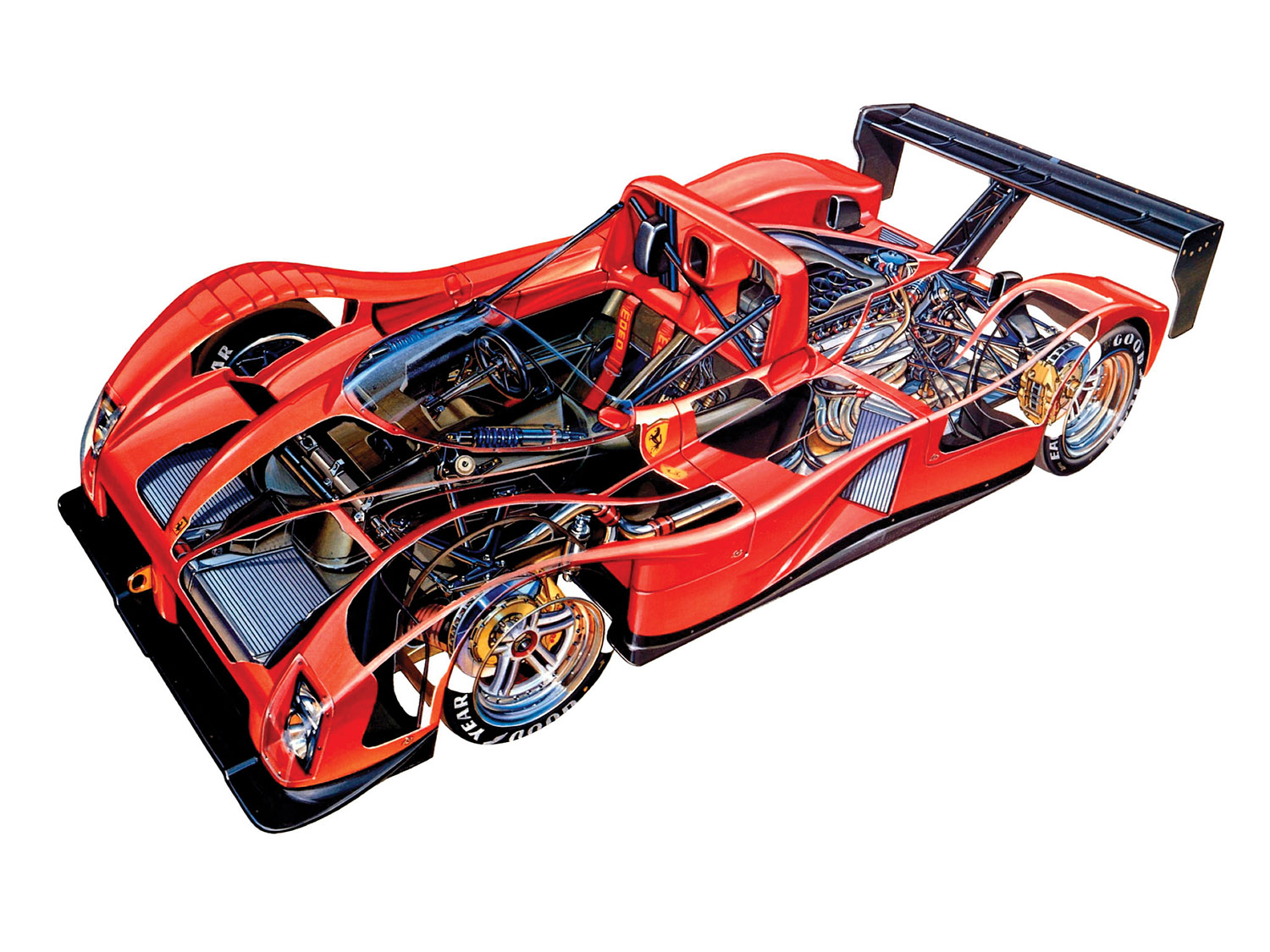Review by Pete Vack
Terry O’Neil is one prolific writer, the author of nine books, three of them with Dalton Watson. An in-depth look at the Ferrari 333 SP is his latest, another quality Dalton Watson volume.
The 333 SP was the result of a myriad of factors; the need for a new prototype sports car class to augment the IMSA GTU and GTS classes, the lack of a Formula 1 Grand Prix in the United States, and the desire of people like Gianpiero Moretti to buy and race a Ferrari in a major series. Moretti helped convince Piero Ferrari to enter the new IMSA “World Sports Car” series (WSC) with a new car with a four-liter engine based on the Ferrari F50, and Piero helped convince Luca di Montezemolo to give the green light. The engine and tub would be in-house Ferrari, suspension, aerodynamics and transmission by Dallara, and the cars would be sold to willing teams who would enter them in events both in the U.S. and Europe. But there would be no official Ferrari entries. It had been 20 years since the last Ferrari sports racer was built, and a huge gap in technology had resulted for Ferrari. But the 333 SP was to become a winner, and one of the most successful Ferrari sports racing prototypes ever constructed. It won the IMSA WSC championship in its second time out in 1995, but in Europe the story was different in the International Sports Racing World Championship series, the 333 SP winning in 1998, 1999 and 2000.
O’Neil really gets into it, giving the overall development, the complete specs, and each race that each chassis took part in from 1994 to 2002. And with so many photos (over 800) this is called a pictorial history for good reason. The 333 SP is presented in just about every livery and modification one can think of in races from Le Mans to Laguna Seca. The number of photos will be a great source of information for those looking to restore a 333SP to a particular color scheme.
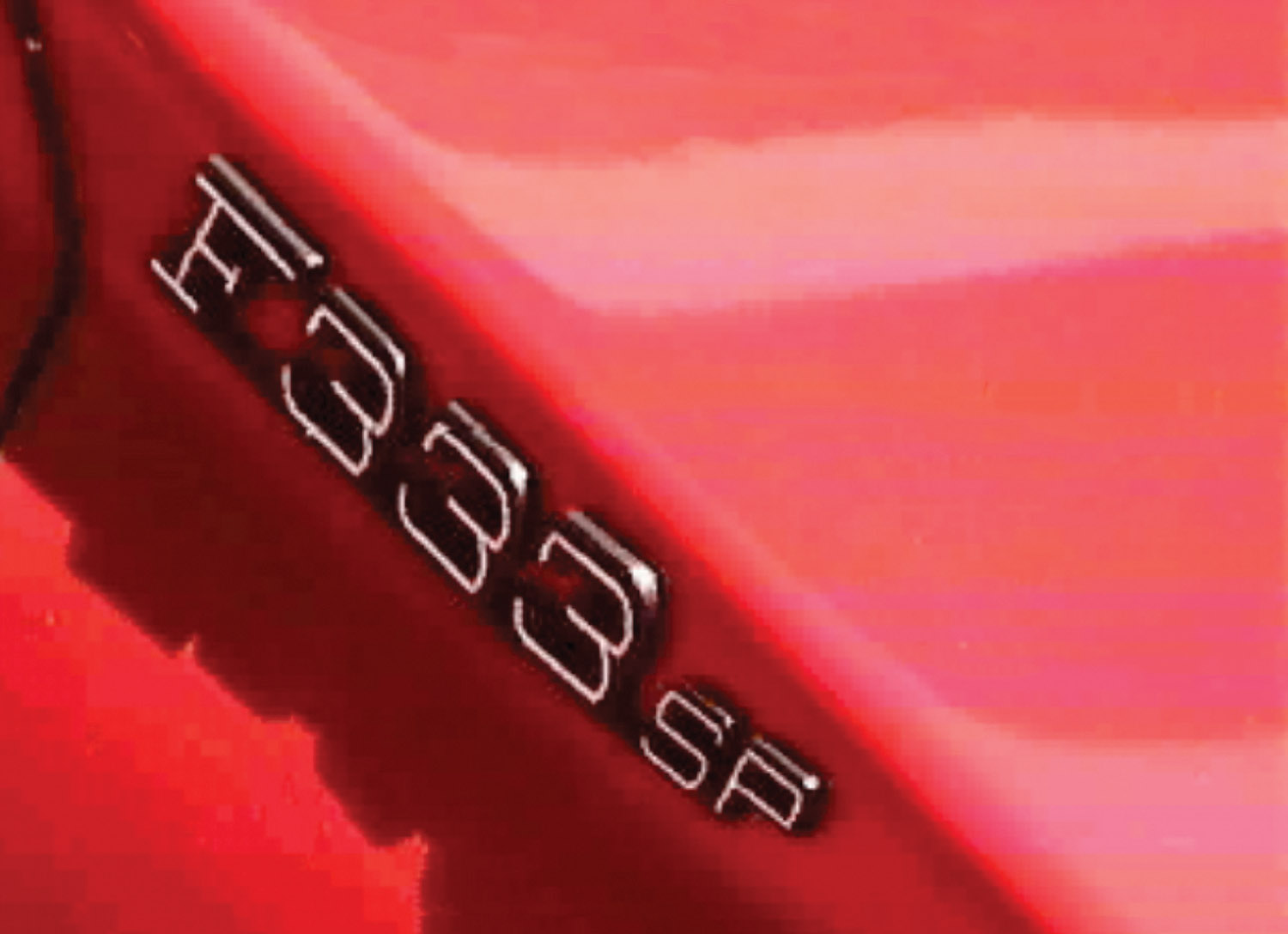
The prototype prototype had the familiar Ferrari black box lettering on the tail, but those quickly disappeared and later cars ceased to have the script. This is one of the many detail shots of the early 333 SPs in O’Neil’s book.
This is not a chassis history. Forty chassis were built (first by Dallara then by Michelotto) presumably with chassis numbers 001-040, but there are chassis 004B and 012B to add to the mix. However, only 27 of the 40 were raced, and only those cars are included in the scope of the book, the history of the remaining cars left untracked. Nor does it trace the history by owner, or mention where the cars are today. That may be a downer, but O’Neil knows that racing history is of primary importance, and correctly should be the focus of this book which already numbers some 420 pages. A new interest in the 333SP might result in further research and books tracking overall history, serial numbers, owners and prices. The results of each race are listed for the 333 SPs. If one is interested the results of each race, however, they can be found here:
http://www.wsrp.cz/imsa1994.html
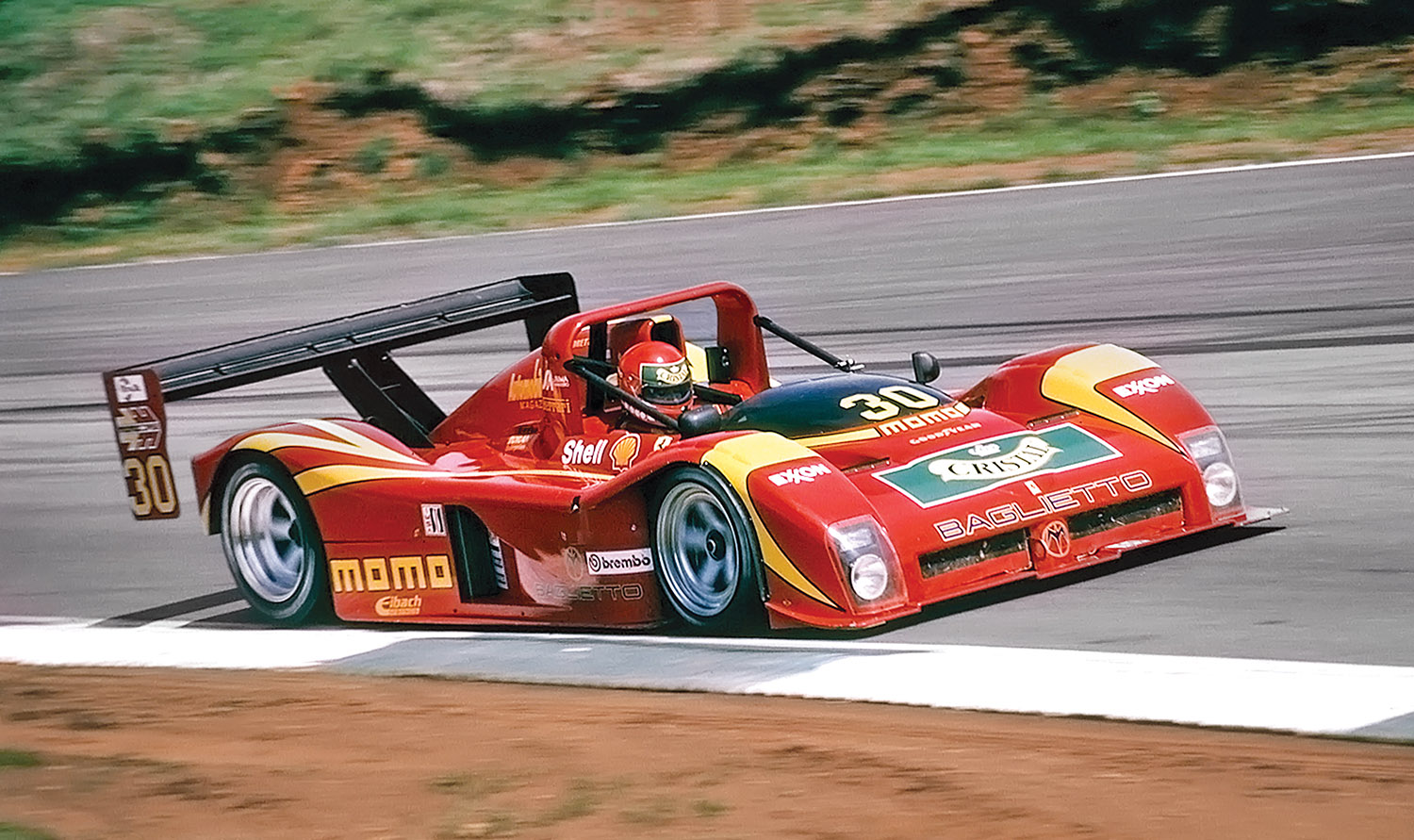
Grand Prix of Atlanta, April 17, 1994. Eliseo Salazar in chassis 004. In it’s first outing the Momo car placed 2nd overall while Jay Cochran in chassis 005 took first.
The 333 SPs competed in similar events across the Atlantic. The constant changes in the series and their names meant a great deal of confusion for the fans and lower gate turnout, which in turn resulted in more changes of hands and ownership of what was once simply IMSA. O’Neil guides us through the labyrinth with a minimum of fuss. We understand what is going on even if the reasons are not clear. Somehow the teams that fielded the 333 SPs kept right on going through the maze and kept right on winning until the steam had run out of both the series and the cars. Not bad though…almost eight years of racing and development, none of which did Ferrari any harm.
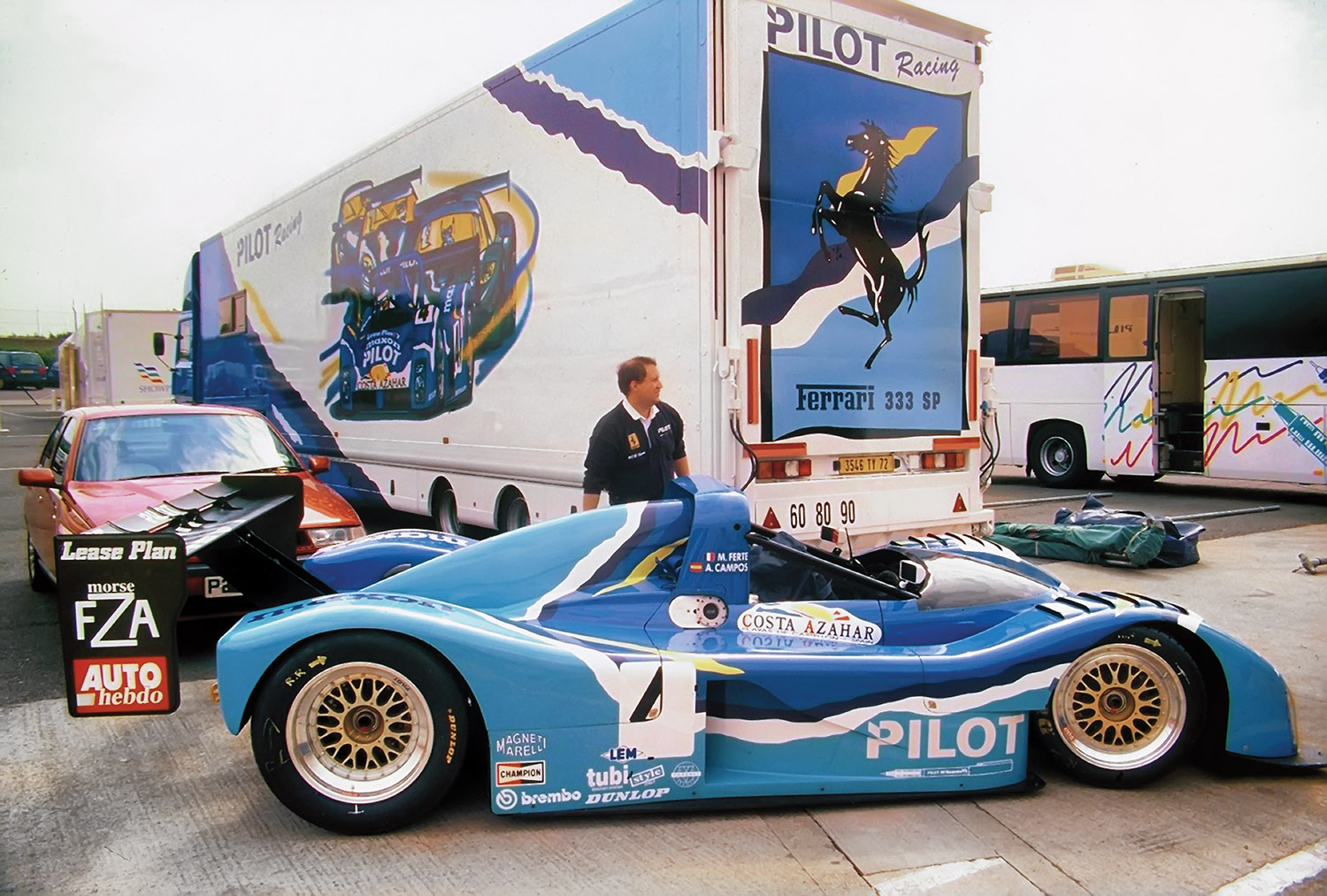
At the 1997 Le Mans, the
Michel Ferte Pilot racing 333 SP chassis 005, is in the paddock with their transporter. It retired but chassis 010 placed 6th overall.
And if you thought that keeping up with the sanctioning organizations was difficult, tracking the entrants, sponsors, private owner, or team owners was not easy either. O’Neil points out that “Doran Racing was the official entrant of all the Momo 333 SPs, in addition to Matthews and Lista 333 SP cars,” but “used Momo in the entry to maximize brand exposure…the partners such as Momo always owned the cars and engines and provided sponsorship money.” Furthermore, in 1995 Gianpiero Moretti, who effectively was Momo, sold Momo to Breed Technologies, but continued to own a Ferrari 333 SP and entered it under the banner of Momo Corse, then Moretti Racing. And it gets deeper and deeper. In the excellent index to the book, (thank you!!) there is listed a total of 36 different teams that campaigned the 333 SP. Pity first the spectator, then the historian.
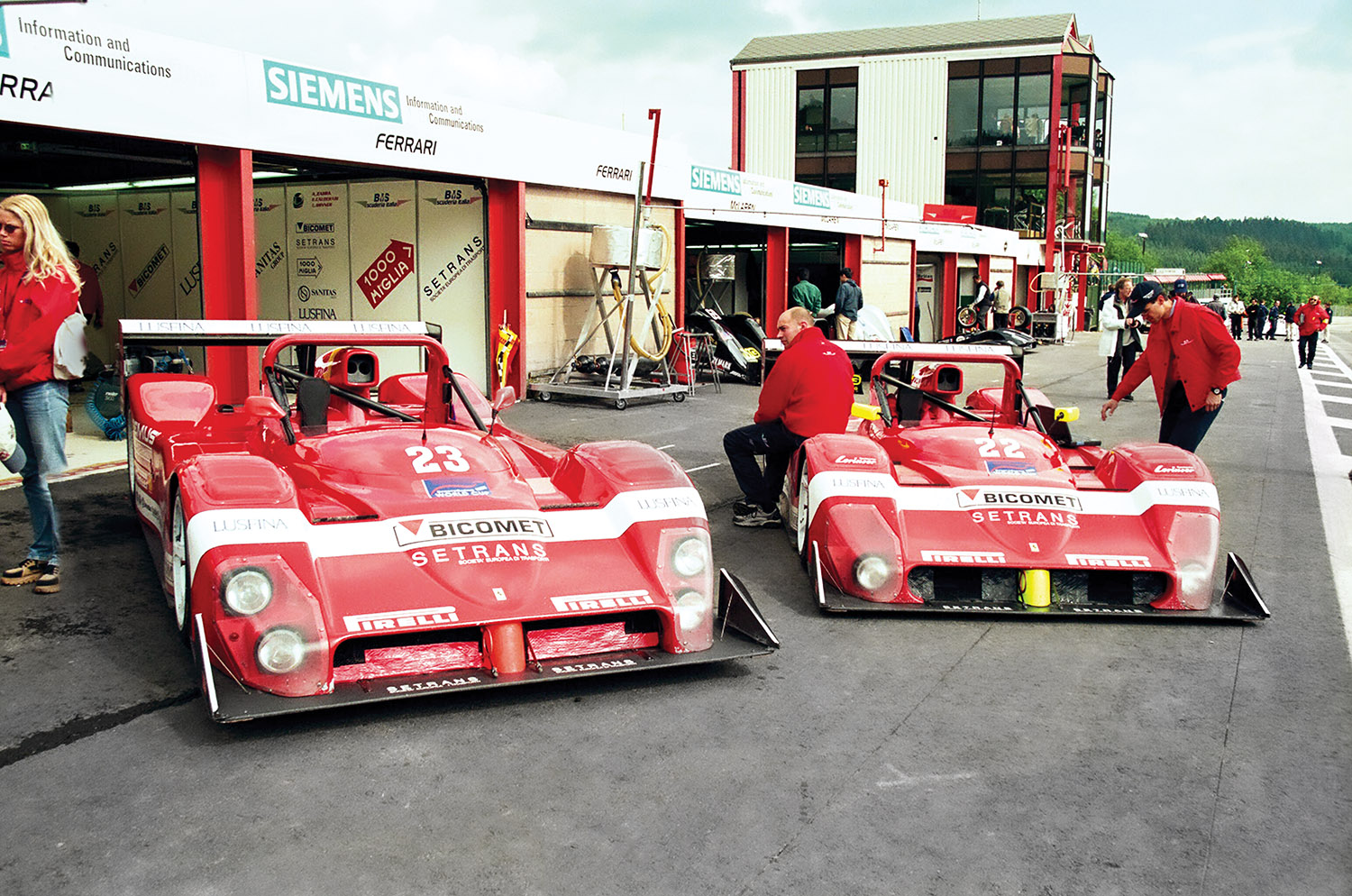
A great photo by Hugues Vanhoolandt. Spa, May 21st, 2000, chassis 024,(dnf) left and 029 (finished 2nd) at qualifying.
Still, for almost a decade, the IMSA/ISRS/SRWC/PSCR/USRRC (yes!)/WSC ran some closely fought races with fast and colorful cars and drivers. In the forefront, for perhaps the last time, were the Ferraris. O’Neil records their triumphs and successes with more than 800 color images from seventeen different sources including our own Hugues Vanhoolandt.
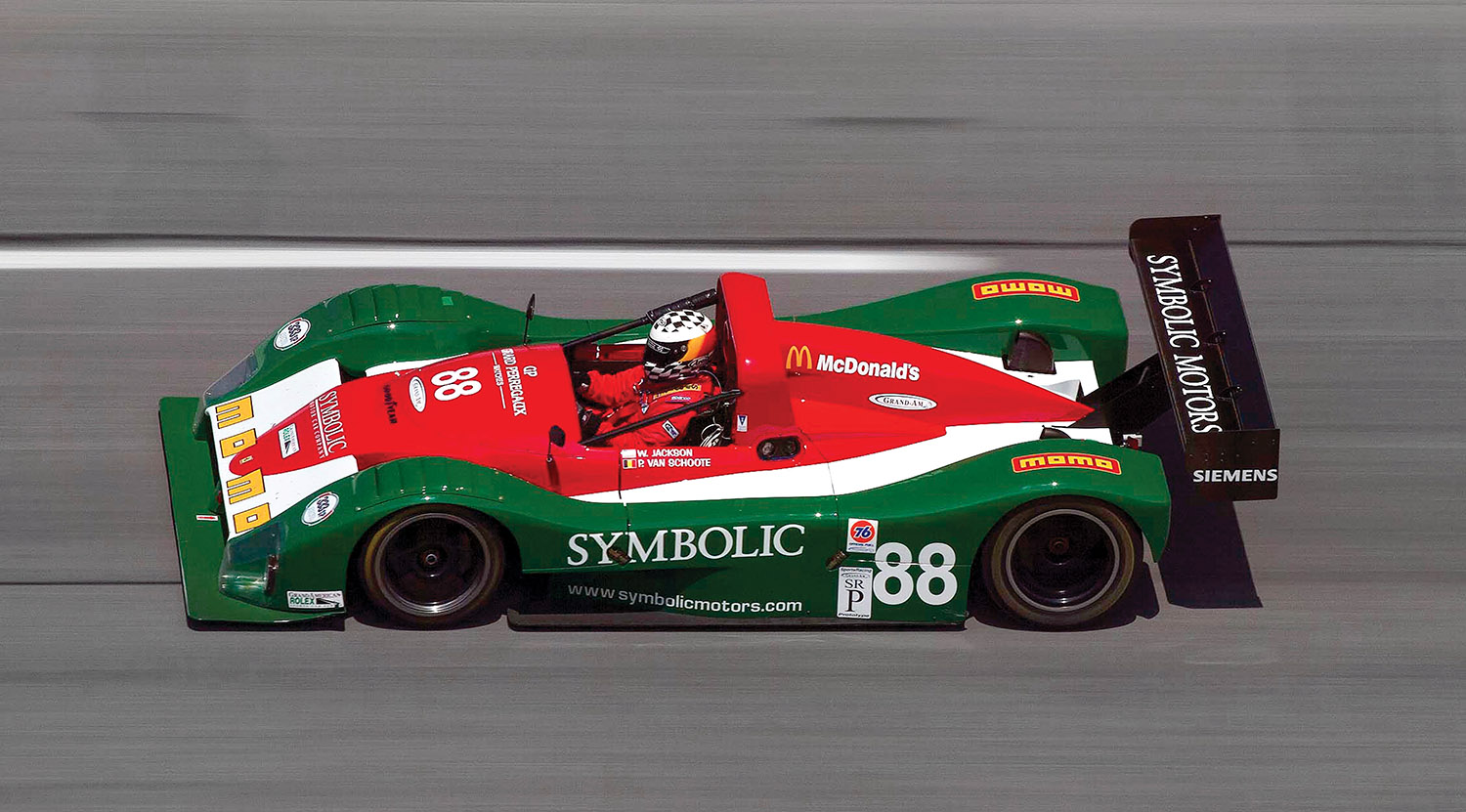
November 19, 2002, Daytona. The Schoote/Jackson 333 SP on its way to fortieth place in chassis 0001.
The last part of the book reproduces a Ferrari Classiche Certificate of Authenticity for Ferrari 333 SP 040, issued in 2008 at the request of Ferrari of Houston. It was deemed authentic in every category, which is fine as the car was only six years old, but of interest is the certificate process and parameters itself.
O’Neil most certainly whetted our interest in this last Ferrari sports car prototype and has paved the way for another book on the subject which will cover the ownership and sales history of all the chassis.
Ferrari 333 SP
A Pictorial History 1993-2003
Author Terry O’Neil
ISBN 978-1-85443-305-3
Publication Date November 2019
Page Size 330 mm x 240 mm. Portrait. 420 pages.
Hard cover with dust jacket.
Illustrations 850 color photographs
Price US$150
Order Here: Dalton Watson Fine Books
www.daltonwatson.com
Reviews of other Terry O’Neil books:
Book Review, Mid-Atlantic American Sports Car Races, 1953-1962
